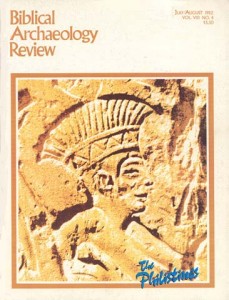Scholars’ Corner: Has Jerusalem’s Millo Been Found?
One of the puzzles British archaeologist Kathleen Kenyon solved during her Jerusalem excavations of 1961–1967 was the meaning of the untranslatable Biblical word Millo. Or did she?
On the steep eastern slope of the city of David (or Ophel), the site of the original city of Jerusalem south of the Temple Mount, Kenyon uncovered tier upon tier of architectural terracing buried beneath an avalanche of stone and debris.
Kenyon identified this terracing, which had supported buildings of the city located on the slope, as the Millo of the Bible: “And David dwelt in the stronghold, and called it the city of David. And David built the city round about from the Millo inward” (2 Samuel 5:9). The Millo is also mentioned in 1 Kings 9:15, 24; 11:27; 1 Chronicles 11:8 and in 2 Chronicles 32:5. Etymologically, Millo is related to a root meaning “filling,” and here there was filling aplenty. Moreover, we know from the Bible that the Millo was located in Jerusalem and had to be repaired from time to time.
Prior to Kenyon’s solution the only thing scholars could agree on was that the Millo was an element in the defenses of the City of David in Solomon’s time. As one scholar put it, everything else that had been “said about the Millo did not go beyond a reasonable possibility and quite often it was less than that.” (J. Simons, Jerusalem in the Old Testament, p. 131.)
Once proposed, Kenyon’s solution was eagerly accepted by most scholars, including Benjamin Mazar, Yigael Yadin, Michael Avi Yonah and Joseph Callaway.
Already a library member? Log in here.
Institution user? Log in with your IP address.

